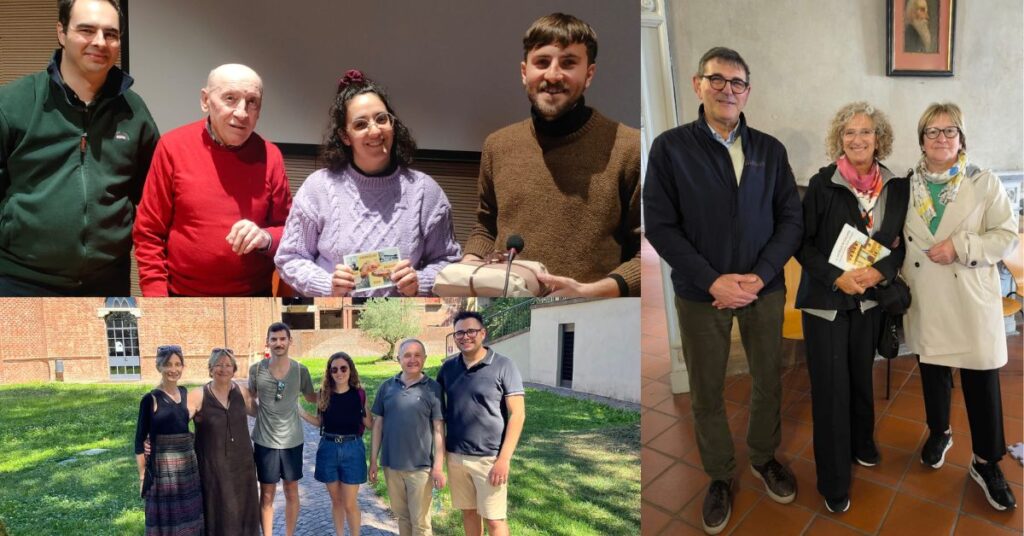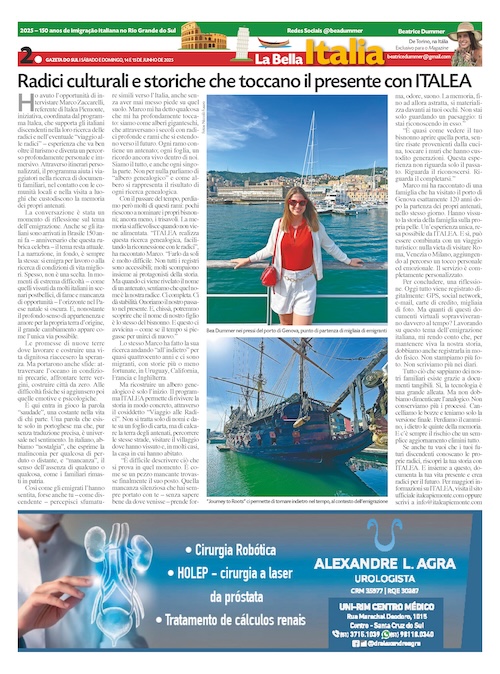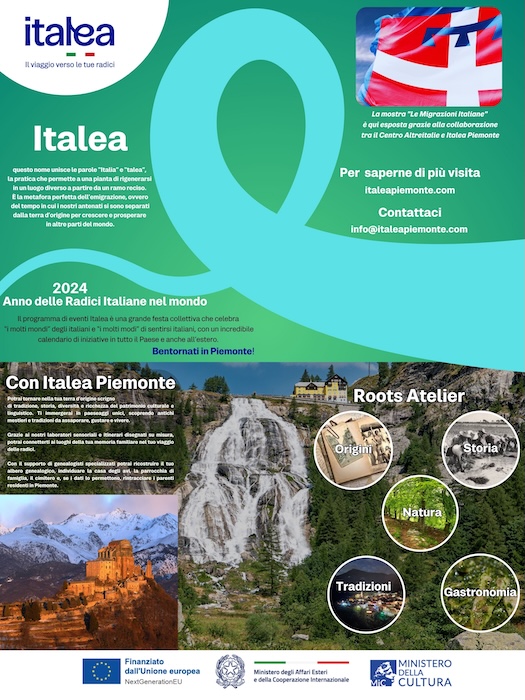A bridge between Argentina and Piedmont, an emotional journey to rediscover their origins: this is the story of the Gelpi family, who embarked on a touching return to Galliate, in the province of Novara, to reconnect with their family history. An experience made possible also thanks to the commitment of Italea Piemonte, the Municipality of Galliate and the network of local associations and scholars.
A deep bond with Galliate: the story of Annarosa Caielli
At the center of this story is Annarosa Caielli, born in Galliate on September 27, 1934 , daughter of Savio Silvio Caielli and Cesarina Martelli. Annarosa, together with her seven brothers and sisters , lived in a very special place: the Visconteo-Sforzesco Castle in Galliate. Their home, at number 1 of Piazza Vittorio Veneto , inside the castle, had been adapted to a stately home at the end of the nineteenth century by the Formenti family. Even the stucco room, now part of the municipal library, still shows the heraldic insignia of the Formenti, and the adjacent pink room and the room of coats of arms were part of the Caielli apartment.
Annarosa’s father, Savio, was an esteemed figure in the country, known for being president of the “Juventus Christi Regis” Youth Association. Curiously, the women’s oratory, run by Salesian nuns, was also located inside the castle, in the wing then occupied by the kindergarten, on the opposite side of the Caielli house.
The turning point for the Caielli family came thanks to their uncle Aldo, Savio’s brother, who emigrated to Argentina where he had built a small mechanical industry in Buenos Aires. It was he who invited Savio’s family to join him, offering job opportunities to his grandchildren. So, in 1948, at the age of fourteen, Annarosa said goodbye to Galliate and embarked with her family for South America. Seven years later, on May 5, 1955, Annarosa married Ruben Martin Gelpi in Mar del Plata.
The return to the origins: the emotions of Joaquin, Elisabeth and Rosario
Decades later, the call of the roots brought the Gelpi family back to Galliate. Joaquin Gelpi, Annarosa’s grandson , embarked on a trip from Argentina in January 2025 to explore the places that marked the life of his “abuela”. Three of Annarosa’s cousins still live in Galliate: Silvio Testa (who worked in Argentina for two years in his uncle Aldo’s company) and his sisters Elsa and Rosanna Caielli. Even a playmate of Annarosa’s from the women’s oratory, which she attended in the early forties, still retains memories of her. The emotions of seeing Galliate again, even after years and generations, have been intense, and family ties have been strengthened thanks to a genuine and authentic welcome. This is also what happened to Elisabeth Caielli, the aunt of Joaquin Gelpi , whose paternal family is originally from Galliate and who lived in the Castle before moving to Argentina in the 50s. Elisabeth expressed her desire to visit the Castle and Galliate in May. Similarly, Rosario Gelpi Trudo, whose grandmother was born and lived in the Castello Visconteo Sforzesco, visited Galliate in July. The ability to access the castle, which does not have fixed visiting hours, was particularly important, and the advice of a cousin who had already visited the place via this platform was invaluable.
Italea Piemonte: a bridge for the “journeys of the roots”
The organization of these visits was possible thanks to a real “teamwork” between the Municipality of Galliate (with the Councilor for Culture and Tourism, Susanna Garzulano, and the Mayor Alberto Cantone), the Galliatese Dialect Group (an organization of volunteers that is interested in local speech and history of the territory), and Italea Piemonte. The latter, a section of Italea (the official promotion program of the roots travels of the Ministry of Foreign Affairs and International Cooperation), collaborated in the realization of a visit-event for the descendants of Annarosa Caielli. This initiative allowed visitors to discover their grandmother’s birthplace, exploring the historical and artistic beauties of Galliate and facilitating moving encounters with local relatives. The presence of scholars such as Roberto Cardano, have played a fundamental role in supporting these “journeys of the roots”, enhancing the cultural and historical heritage of the territory and promoting the rediscovery of their origins for the descendants of Italian emigrants.




